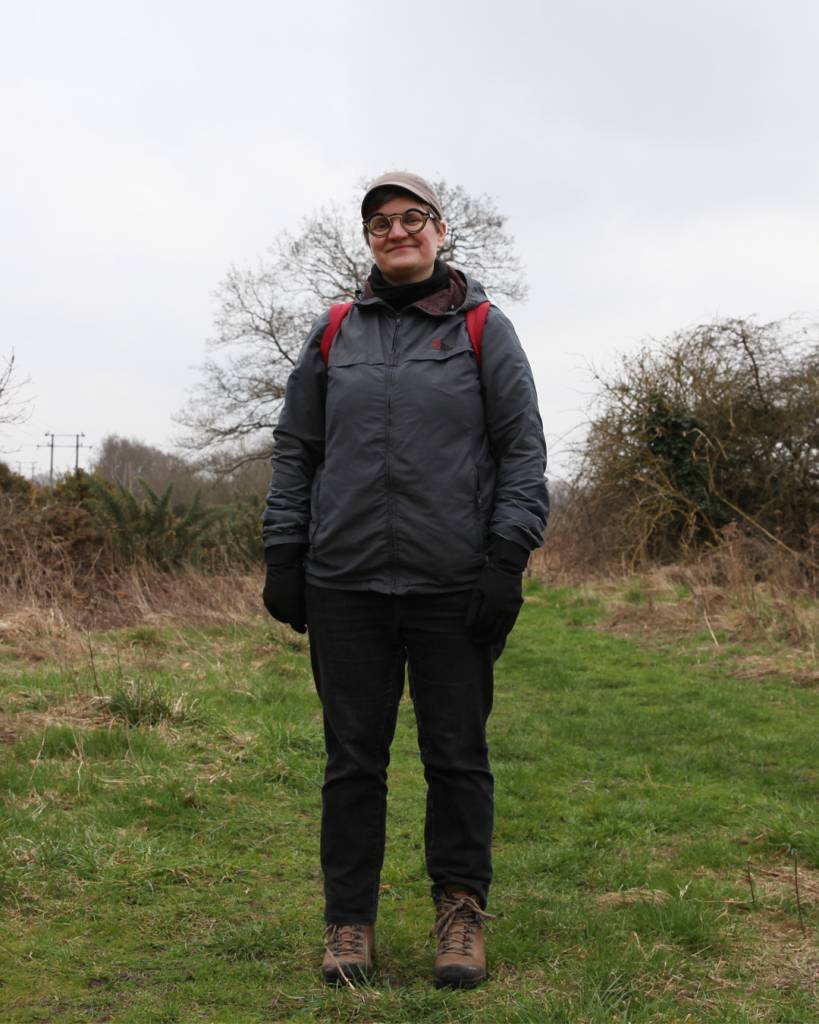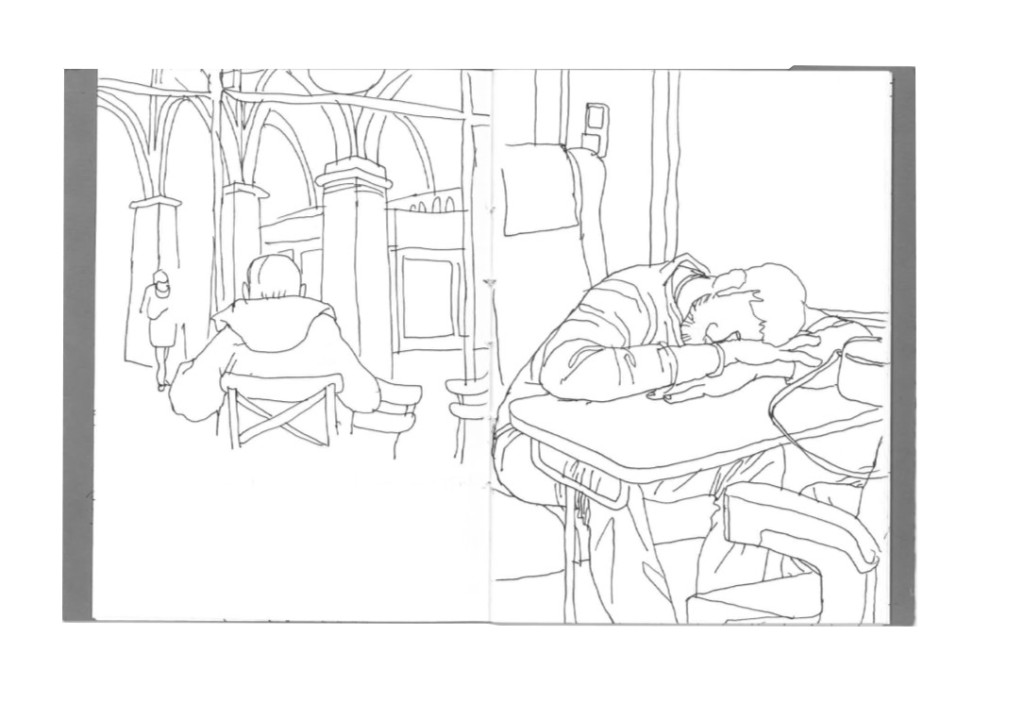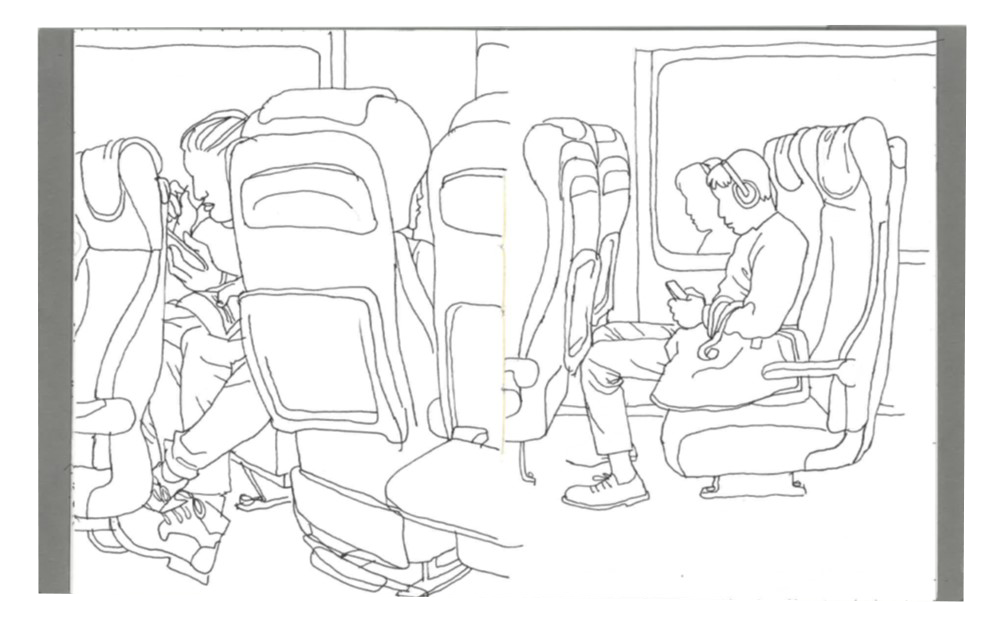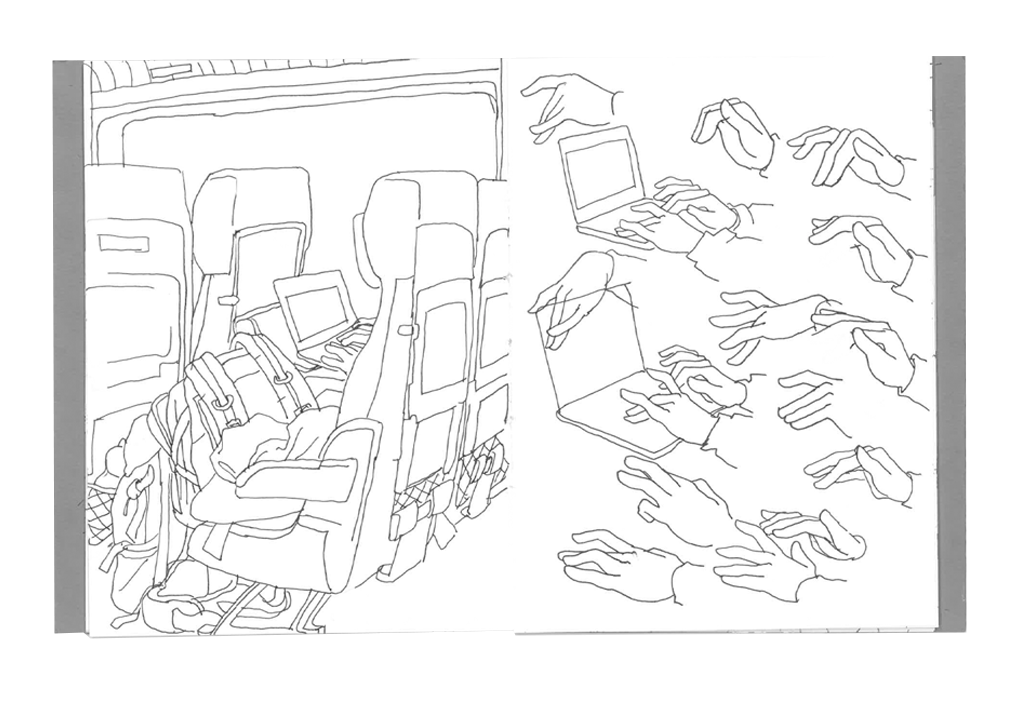ON OUR DOORSTEPS | Tiitu Tikalo & Tim Harrison
Tiitu Tikalo & Tim Harrison In Conversation
Explore a wilderness in the city. Bristol based writer Zakiya Mackenzie and Finnish graphic novelist Tiitu Takalo unearth the stories of those who love Sweet Briar Marshes in a series of newly commissioned billboard artworks, but you’ll need to get out there to find them!
Created in collaboration with local people and Norfolk Wildlife Trust, On Our Doorsteps is part of a nationwide project exploring the relationship between urban communities and the green spaces around us.
Earlier in the year, we met with We Live Here founder, Tim Harrison and Finnish Artist, Tiitu Takalo to hear a little more about the project which will feature as part of this year’s Festival. We spoke to Tiitu about her creative process and the significance of working within the urban greenspace, Sweet Briar Marshes.
Introduce yourselves
TT: Im Tiitu Takalo, an illustrator from Finland. A graphic novelist for 20 years now, I started as a publisher and now I have been doing like long graphic novels, over 200 pages usually.
TH: My name’s Tim Harrison, and I’m the artistic director of an organisation called We Live here, which is a new organisation exploring the relationship between people and nature and landscapes and on our doorsteps, which is the project that’s happening as part of Norfolk Norwich festival. We’re particularly looking at the relationship of urban and more diverse communities to the landscapes that are, as the title says, on their doorsteps, the places that we see every day but often don’t value or think about as much as we might some more of the sort of iconic landscapes that are very much celebrated.
Tiitu, you’ve had a long journey to get to Norwich, tell us a little bit about that?
TT: So I came here with the train and also ferry first ferry to Sweden and from Stockholm to Copenhagen and Copenhagen to Hamburg and Hamburg, to Cologne. And then from there to Brussels and under the canal with the train to London and from London to here. And I choose to come with the train because of course environmental reasons. I don’t feel good flying like I feel that it’s not something that we would do and I don’t want to do it sometimes. I do fly, but not often and I try to. Not to do it, so if it’s possible, I’d rather take the train.
TH: And it’s obviously one of the challenges doing international arts projects. So I think we and obviously Norfolk & Norwich Festival as well feels that bringing international artists to the UK is really important and it’s really important to have those kind of global perspectives. But how do you do that without having a adverse effects on the environment? And I think it’s something we’re all thinking a lot about.


What is the landscape like where you live in Finland?
TT: So I live in Tampere, Finland. In total there’s only 5 million people, So we have a lot of space. Its always a culture shock for me to be in London, it’s a little bit too big for me. And one thing in the Tampere is that there’s this formation which Ice Age made like it’s it’s a high hill and it’s made made from small rocks like gravel, So it’s like a Mountain, and that’s something that’s makes my hometown my hometown. The city centre is between two Big Lakes. So it’s quite hard actually build something there because it’s it’s a really narrow place between the lakes so. 75% of Finland is forest, so it’s mostly forest. So that’s a that’s a really difference between the UK and Finland. The forests are really important. I’ve been running in the forest, skiing in the forest, and in winter time the lakes are getting Icey and you can walk on the ice and then it’s magical when you can you get the like kilometres of Space suddenly. You have the freedom to go wherever on the lake. And that’s that’s important for me.
Do you think that in Finnish culture, the landscape is appreciated more widely than it is here in the UK, given that there is wider access to it?
TT: It’s all so different because everyone has a right to use the forest like, for camping and picking berries and mushrooms and just walking. Even if someone else the forest, you can do that and. That’s something I usually forget when I’m somewhere else and someone owns this land and you cant go there, Why??! Because, someone might own a forest, but, it doesn’t mean that you can’t walk there, so it’s really hard for me to understand that someone says that you can’t go everywhere.
So how did that feel for you going to a place which we’re calling a lovely natural place, But it’s so surrounded by people and evidence of people?
TT: That was a little bit weird that for me, especially the sound of the cars because it’s all the time like…AHH!, because where I live, I live quite near the city centre and I have like 7 minutes walk to the forest and there I have to walk like 15 minutes to be so far away that I cant hear any cars. And here, It’s much harder.
TH: And I think even in the countryside, when you go away, when you can’t hear cars and things like that, even in the north Of Scotland there’s still Landscapes where people have had a huge effect on them over the centuries, whether it’s through farming or even through conservation and things like that, that’s another aspect of how human beings have sort of impacted and selected different landscapes and valued them differently.
So what were your impressions of Sweet Briar Marshes? Cause there are those things that are kind of impinging and coming into your hearing and your vision but its still somehow very beautiful?
TT: Of course, it’s important to have that green area there. There was a lot of beautiful old trees where I’m coming from there. It’s too North for the oaks, so they are exotic for me. I was taking a lot of pictures of the trees and of course, now there’s no flowers, Flowers are still coming, I’ve got the feeling that it’s important place.
In some of your graphic novels, you really get a sense of the kind of the community in the landscape, is that something that you’re consciously interested in?
TH: Like in Memento Mori there’s a really beautiful bit, where in your recovery you go walking, I think on the lakes that you’ve just been describing. So I’m really interested in how it it feels like you have quite a strong personal relationship with these landscapes
TT: Yes, I’m healing from the Bleed in my brain. Walking on the lakes was part of my healing process. Usually you get perspective like, I have these problems, but I’m so small like my problems have to be really small too, because I can see like kilometres from every direction and I can walk here and I’m so tiny. And I think that’s an important feeling it’s not a bad feeling at all. Cities are built with the human scale. Of course, there’s some tall buildings but mostly they are human scale but, when you are next to an Ocean or nature, or somewhere where you can see really far and you understand that I’m not that big and we are not that big.
What does your creative process look like?
TT: The conversations I have are the base of the of the artwork, but then I use some photos usually, sketches too. But it’s quite hard to translate to someone’s story, because they are telling their story or their feelings or their memories, I only have so much space to tell them. Then I write them down to be a comic strip … Or maybe it’s not comic because it’s not funny … Or maybe it’s funny. I don’t know yet!
TH: I’m really interested to see how you’ll capture the experiences and feelings of the people that you’re gonna be working with and and then also how those will encourage people to reflect on their own experiences when they go out to the marshes and walk around and see these artworks. To kind of think also about their own, their own relationships with that space.
Where can we see ON OUR DOORSTEPS?
TH: It’s going to be presented as part of the Norfolk & Norwich Festival in May. We should also mention, Zakir Mackenzie, who’s a writer from Bristol who’s going to be working with another group of people from the communities around Sweet Briar Marshes. And we’ll be working out on the marshes, There’ll be a chance to, for people who come along to that, to meet the artists, but also some people from the Norfolk Wildlife Trust who’ve been supporting the project. There will be opportunities for people to get out there and see the artworks which we’re looking forward to seeing from Tiitu.



Drawings taken from Tiitu Takalo’s Sketchbook.